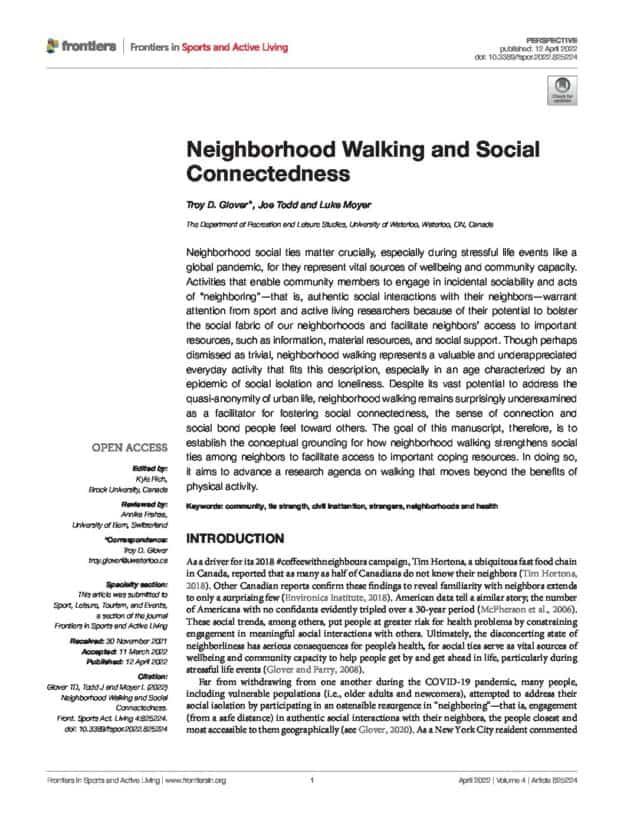Abstract
Neighborhood social ties matter crucially, especially during stressful life events like a global pandemic, for they represent vital sources of wellbeing and community capacity. Activities that enable community members to engage in incidental sociability and acts of “neighbouring”—that is, authentic social interactions with their neighbours—warrant attention from sport and active living researchers because of their potential to bolster the social fabric of our neighbourhoods and facilitate neighbours’ access to important resources, such as information, material resources, and social support.
Though perhaps dismissed as trivial, neighborhood walking represents a valuable and underappreciated everyday activity that fits this description, especially in an age characterized by an epidemic of social isolation and loneliness. Despite its vast potential to address the quasi-anonymity of urban life, neighborhood walking remains surprisingly underexamined as a facilitator for fostering social connectedness, the sense of connection and social bond people feel toward others.
The goal of this manuscript, therefore, is to establish the conceptual grounding for how neighbourhood walking strengthens social ties among neighbours to facilitate access to important coping resources. In doing so, it aims to advance a research agenda on walking that moves beyond the benefits of physical activity.



Responses